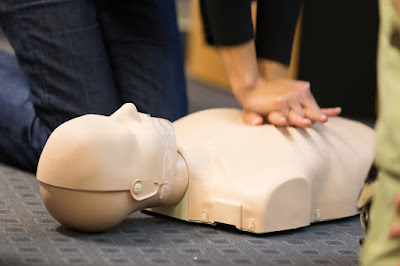If you’re at all interested in health and fitness, you’ve probably heard of CPR or the act of cardiopulmonary resuscitation. As part of this life-saving measure, you try to keep oxygen flowing to the heart and brain until emergency medical services arrive on the scene. But while CPR can save lives, there are some common mistakes that you can make during the procedure. Here’s what you need to know about performing it correctly and why it’s so important to take a CPR course Brisbane residents can attend in order to get their certification.
The Importance of Knowing CPR
It's a scary thought - being the only person around when someone has a cardiac arrest. What if you don't know how to perform CPR? Taking a CPR course can help equip you with the skills and knowledge necessary to save a life.
Every year, thousands of people suffer from cardiac arrests, and many of them die as a result. However, if more people knew CPR, many of these deaths could be prevented. Cardiopulmonary resuscitation, or CPR, is a simple procedure that anyone can learn. It involves using chest compressions to maintain circulation and keeping the airway open so that oxygen can reach the lungs. By performing CPR, you can buy vital time for the victim until paramedics arrive. In many cases, this can mean the difference between life and death.
Moreover, CPR is not difficult to learn, and there are many online resources that can help you get started. Whether you are a concerned citizen or a medical professional, learning CPR is an essential step in saving lives.
Important Things to Remember
- Hands-only CPR is just as effective as CPR with mouth-to-mouth breaths for adults who have suddenly collapsed.
- If the victim has a pulse but is not breathing, provide rescue breaths.
- If you see an object blocking the victim's airway, do not attempt to remove it; simply tilt the head back and begin rescue breaths.
- It is important to compress the chest at a rate of 100-120 beats per minute; if you are unsure of the correct tempo, aim for Staying Alive by The Bee Gees.
- Allow the chest to rise fully between compressions.
- Perform CPR for two minutes before checking for signs of life; if there is still no response, continue CPR until emergency medical help arrives.

Key Learning Points From the Class
CPR is an important life-saving technique, but it's also one that many people don't know how to perform correctly. A CPR course can help you learn the proper way to do CPR and avoid common mistakes. Here are some key takeaways from a recent CPR course held in Brisbane...
Know the hand placement for chest compressions. Place your hands on top of each other and make sure they cover more than just the middle part of the chest.
this website: first aid cpr course brisbane
Breathe out with every compression. Don’t try to breathe in during chest compressions because this will interrupt your breathing pattern. Instead, exhale as you push down on their chest for about 2 seconds before releasing back up to let them breathe in naturally again.
Perform 30 compressions at a rate of 100/minute.
Avoiding Errors When Performing CPR
- If you haven't had a CPR course Brisbane, now is the time to take one! There are many common mistakes made during CPR, and knowing how to avoid them can mean the difference between life and death.
- One of the most common mistakes is not checking for a pulse before beginning chest compressions. It's important to check for a pulse first, as you might be wasting your time if there is none.
- Another common mistake is not using enough force when performing chest compressions. You need to use enough force to actually move the ribs, which requires quite a bit of effort.
- Not placing your hands in the correct position is another error that people often make during CPR.
Source: https://brisbaneremotefirstaidcourse.blogspot.com/2022/07/common-mistakes-you-might-be-making.html
